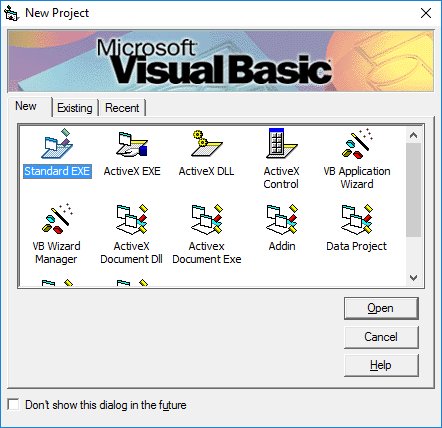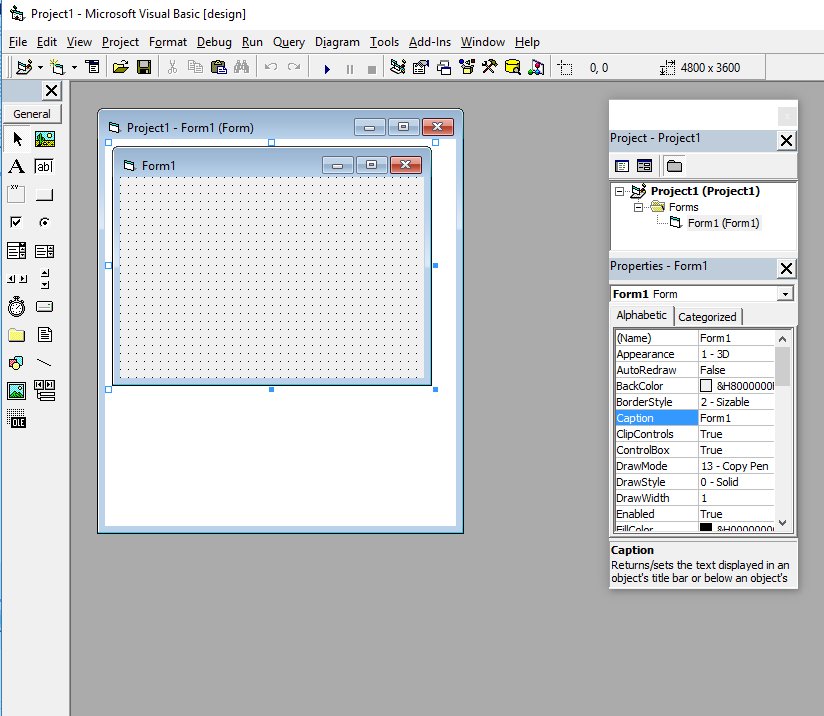Programming involves the creation of a series of instructions aimed at directing a computer to perform tasks far more efficiently than humans. The initial programming language, known as machine language, relied on binary code (consisting of 0s and 1s) to establish communication with the computer. Nonetheless, machine language posed significant challenges due to its complexity. Thankfully, scientists have since developed high-level programming languages that are considerably more user-friendly and accessible for mastering. Among the high-level programming languages are Java, JavaScript, C, C++, c# and Visual Basic. If you are keen yo learn JavaScript programming, please check out our JavaScript Tutorial.
If you are looking for help with your computer science essays and research papers, don't hesitate to contact paper writing services provided by CustomWritings.com.
Visual Basic, a third-generation event-driven programming language, was first introduced by Microsoft in 1991. It evolved from an earlier DOS-based language known as BASIC, which stands for Beginners' All-purpose Symbolic Instruction Code. Over the years, Microsoft released several versions of Visual Basic, starting with Visual Basic 1.0 and culminating in Visual Basic 6.0, the final iteration. Renowned for its user-friendly interface, Visual Basic was specifically designed for beginners, enabling them to easily create GUI-based window applications.
In 2002, Microsoft launched Visual Basic .NET (VB.NET) as a replacement for Visual Basic 6. Subsequently, in 2008, Microsoft officially classified VB6 as a legacy programming language. Despite this, Microsoft continues to offer limited support for VB6. VB.NET, a fully object-oriented programming language built on the .NET Framework, was developed to support web and mobile application development. However, many developers continue to prefer Visual Basic 6.0 over its successor, citing various reasons for their preference.
In VB 6, the possibilities for program creation are virtually boundless. Whether you're a math teacher exploring coding programs like geometric progression calculators, quadratic equation solvers, simultaneous equation solvers, prime number testers, factor finders, or quadratic function graph plotters, the potential is immense. For science educators, VB 6 can power simulation programs for concepts like projectile motion, simple harmonic motion, and even interactive scenarios like Star Wars-inspired simulations. Businesses can harness VB 6 to build practical applications such as inventory management systems, amortization calculators, investment calculators, point-of-sale systems, payroll solutions, and accounting software—streamlining processes and driving productivity. Gaming enthusiasts can bring their ideas to life with creations like slot machines, Reversi, tic-tac-toe, and more. Additionally, the multimedia domain opens up exciting opportunities to develop smart audio players, multimedia players, and a host of other innovative applications. For inspiration and guidance, check out our extensive library of VB sample codes.
Before you can write programs in VB 6, you need to
install Visual Basic 6 compiler on your computer. You can purchase a copy of Microsoft Visual Basic 6.0 Learning Edition
or Microsoft Visual Basic Professional Edition
from Amazon.com, both are vb6 compilers. Besides, you can also buy it from eBay at Microsoft Visual Basic 6.0 6 Professional PRO MSDN Library Manual Service Pack. If you have already installed Microsoft Office in your PC or laptop, you can also use the built-in Visual Basic Application in Excel to start creating Visual Basic programs without having to spend extra cash to buy the VB6 compiler.
You can also install VB6 on Windows 10 but you need to follow certain steps otherwise the installation will fail. First, you need to run setup as administrator. Next, you need to use custom installation. Clear the checkbox for Data Access. If you don't, set up will hang at the end of the installation. Finally, click next and wait for the installation to complete. For complete instructions, please follow this link Install VB6 on Windows 10
After installing the vb6 compiler, the icon will appear on your desktop or in your programs menu. Click on the icon to launch the VB6 compiler. On start up, Visual Basic 6.0 will display the following dialog box as shown in Figure 1.1.

You can choose to either start a new project, open an existing project or select a list of recently opened programs. A project is a collection of files that make up your application. There are various types of applications that we could create, however, we shall concentrate on creating Standard EXE programs (EXE means executable). Before you begin, you must think of an application that preferably have commercial ,educational or recreational value. Next, click on the Standard EXE icon to go into the actual Visual Basic 6 programming environment.
When you start a new Visual Basic 6 Standard EXE project, you will be presented with the Visual Basic 6 Integrated Development Environment (IDE). The Visual Basic 6 Integrated Programming Environment is shown in Figure 1.2. It consists of the toolbox, the form, the project explorer and the properties window.

The Form is the primary building block of a Visual Basic 6 application. A Visual Basic 6 application can actually comprise many forms, but we shall focus on developing an application with one form first. We will learn how to develop applications with multiple forms later. Before you proceed to build the application, it is a good practice to save the project first. You can save the project by selecting Save Project from the File menu, assign a name to your project and save it in a certain folder. You shall now proceed to learn Visual Basic programming from the next lesson onwards.
For further reading, Check out our book at Amazon.com.
Copyright©2008 Dr.Liew Voon Kiong. All rights reserved |Contact|Privacy Policy